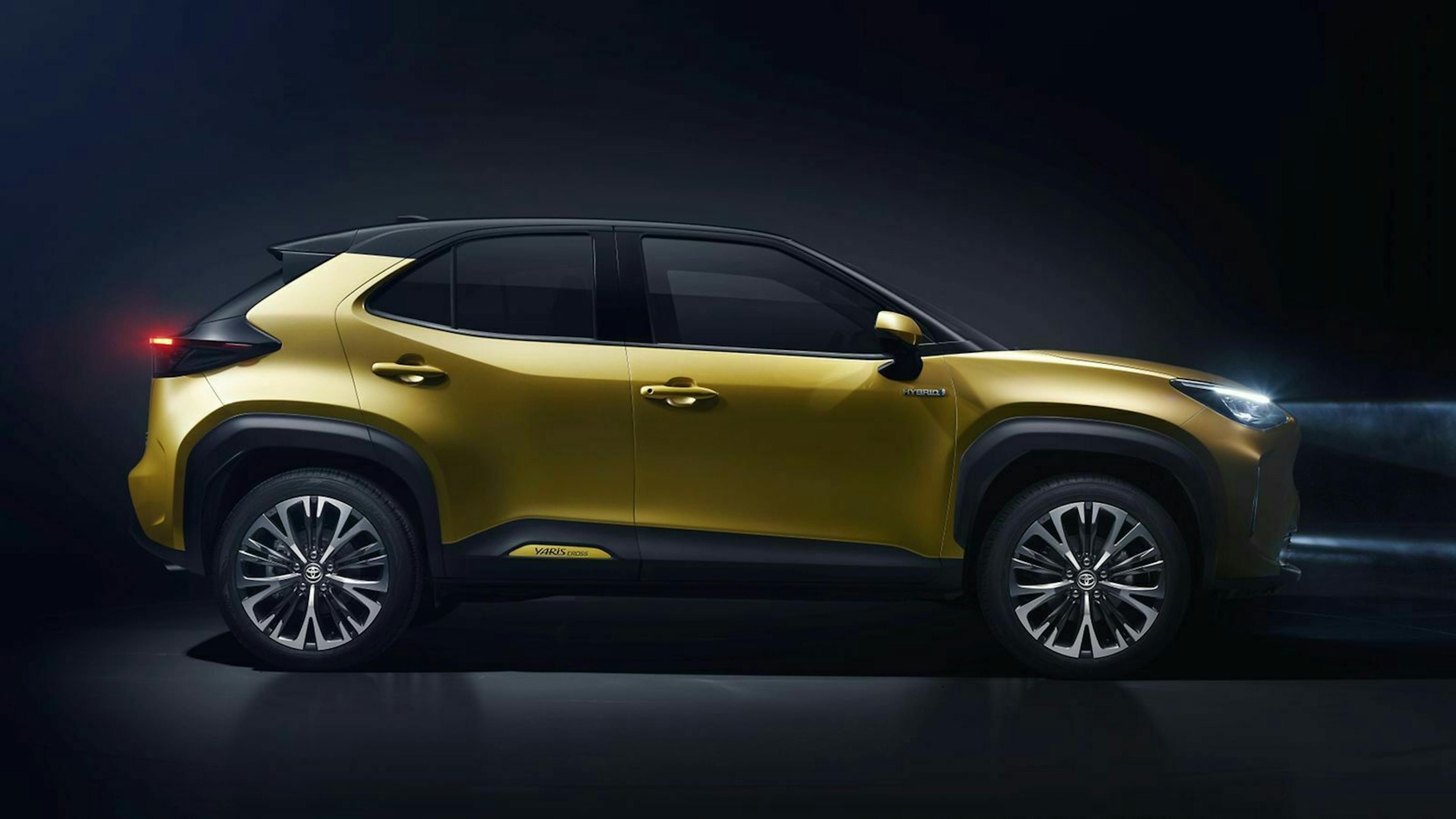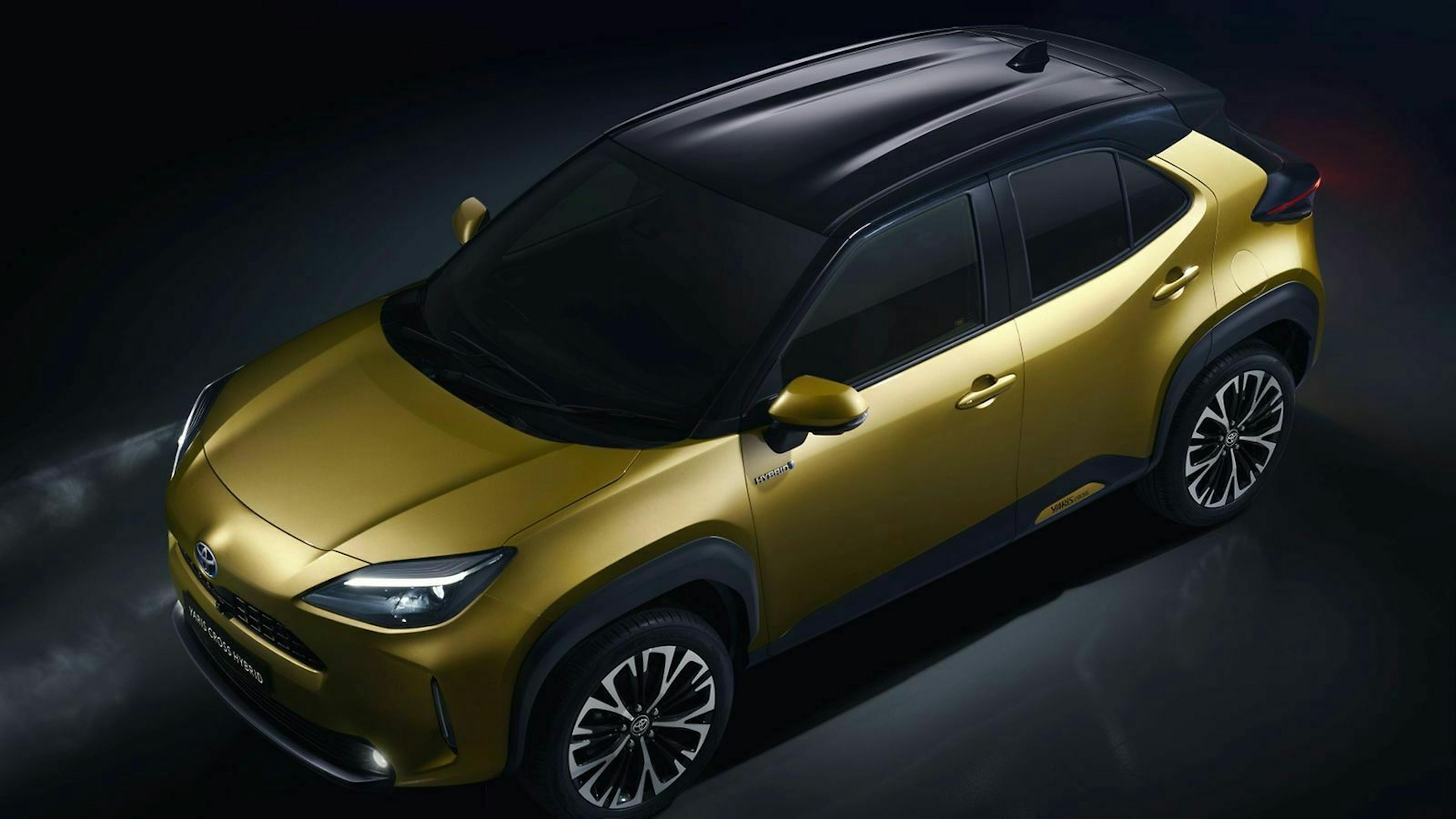Toyota Yaris Cross SUV 2020: pictures, data, hybrid, market launch
Toyota has a largely complete European program: micro and small cars, compact class, middle class, plus two SUVs, two commercial vehicles, even a sports coupé are offered by the Japanese. Only in the boom segment of mini SUVs has emptiness yawned so far. This is changing: In 2021, the Yaris Cross will be launched as a 4.18-metre short SUV, of course with hybrid drive, quite surprisingly also with an all-wheel drive option.
The most important facts in brief
- Mini SUV based on the new Toyota Yaris
- 4.18 meters exterior length, variable trunk
- Hybrid drive with 116 hp and less than 90 g/km CO2 emissions
- Market launch 2021, production in France
The Japanese surprise with the naming. Yaris Cross sounds as if it is a model variant of the Yaris small car, not a much larger, independent model. After all, the name seems catchier than the letter abbreviations C-HR or RAV4, with which Toyota has so far named its SUVs.
Body and space of the small Yaris SUV
Basically, Toyota divides the previous Yaris into two models. The discontinued model is extremely spacious for a small car, but offers little sportiness. The new Yaris 2020 is more toned and tighter. If you need more space, you will find it in the Toyota Yaris Cross.
It relies on a beefy SUV look. Wheels up to 18 inches tall sit in square wheel arches with plastic trim. The radiator grille is steep, the rear promises a large trunk. Nevertheless, compared to the larger C-HR, Toyota relies on a quieter, less polarizing design. More mainstream, better chances of success. This SUV doesn't scare anyone.

The Toyota Yaris Cross shares the platform with the next Toyota Yaris, but is 24 centimeters longer, has three centimeters more ground clearance and nine centimeters more height. The wheelbase remains the same at 2.56 meters. The Japanese have not yet given an exact trunk volume. It will be significantly higher than that of the Yaris (284 l). The Yaris Cross also has more variability: the load floor is height-adjustable, the rear bench is divided in a 40:20:40 ratio. In addition, there is an electric tailgate that can be opened by waving your foot.
Toyota Yaris Cross: Interior and cockpit
In the cockpit, the Yaris SUV is similar to the Yaris: high-quality, but pragmatic. The dashboard, center console and internals are largely similar to those in the Yaris. So Toyota is lining the interior with grained hard plastic. Here and there, Toyota distributes additional trim surfaces, such as a piano lacquer trim below the infotainment screen. Since the SUV is hardly wider than the small car, there are also few storage options in the center console. Clearly, the SUV clearly surpasses the small car in terms of space.
Assistance and infotainment: Safe SUV
Toyota calls its safety package "Safety Sense". From Japan, CEO Akio Toyoda has issued a directive to offer it as standard in as many segments as possible. We therefore expect the same for the Yaris Cross mini SUV.
The range of functions is likely to be the same as in the new Toyota Yaris: The autonomous emergency brake uses radar to detect cars, cyclists, pedestrians and other obstacles even in poor light. The adaptive cruise control ACC can take over speed limits with a fingertip. An evasive assistant calculates an evasive lane in an emergency. If the Yaris comes too close to an obstacle, the automatic brake intervenes. As in the Yaris, we expect an inductive charging cradle for the mobile phone as well as a head-up display that projects directly into the windscreen.
Drive and motors
There is also little surprise with the drives: they are largely similar to those in the Yaris small car. Specifically, Toyota announces the same hybrid train. It mobilizes 116 hp of system power from a 91 hp 1.5-liter three-cylinder gasoline engine and a 59 kW electric motor. As usual, the power is continuously transmitted to the front wheels. Toyota also offers the same engine block in a variant without hybrid technology, then with around 120 hp. We don't expect the entry-level gasoline engine of the Yaris (69 hp) in the heavier SUV, and not a diesel anyway.
A special feature: The Yaris Cross is available with all-wheel drive. Toyota is relying on an electric variant in which an electric motor drives the rear axle as needed. So there is no need for a cardan shaft. The Japanese are implementing a similar system in the larger RAV4.

Both Yaris models share the same platform and drives. Both are said to benefit from a stiff body and a low center of gravity, so the SUV should also drive similarly agile and comfortable, as the small five-door model was able to prove in the first test. The difference in concept between small cars and SUVs is clearly evident in consumption.
After all, the Yaris Cross weighs more, its center of gravity is higher and the aerodynamics are less favorable. Toyota states the expected standard emissions as "less than 90 g/km CO2". The all-wheel-drive version is said to be less than 100 grams per kilometer. For the front-wheel drive model, this corresponds to an NEDC consumption of 3.9 l/100 km of gasoline. Consumption in the more realistic WLTP measurement cycle will be at least 5.1 l/100 km. The comparative value of the light and streamlined Yaris: 2.9 l/100 km and 3.7 l/100 km respectively.
Toyota Yaris Cross: Market launch and prices
Toyota customers pay for the higher seating position and the generous amount of space at the gas station – but not only. While the Yaris Hybrid is expected to cost a good 20,000 euros as a small car according to the list, the Yaris Cross will only be available without electrification at this price. Hint for the hybrid: The main competitor Hyundai Kona Hybrid starts at 26,000 euros - and Hyundai usually manages to undercut the Japanese in list price for electrified models.
Toyota wants to produce the Yaris Cross side by side with the small car Yaris, at the French Toyota plant near Valenciennes. The Japanese company has so far vaguely announced the market launch for 2021. Then, however, 150,000 Yaris Cross are to roll off the production line annually and capture a market share of eight percent in the mini SUV segment. Ambitious plans – but they could work out if European customers increasingly get used to the hybrid drive.
